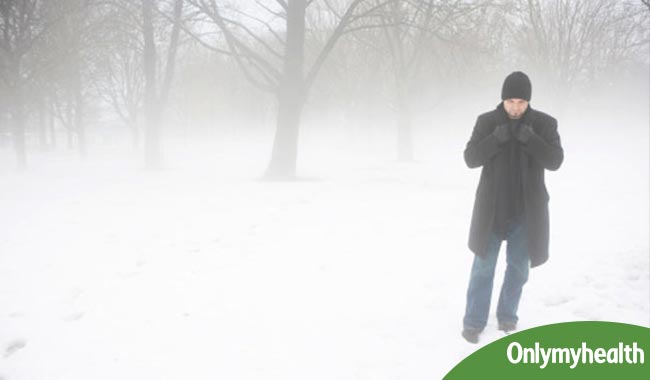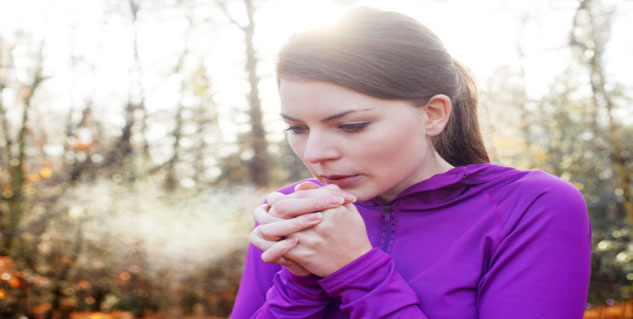
Man is a warm-blooded animal. This means that the internal temperature of the human body stays around 37 degree Celsius despite variations in environmental temperature. Prolonged exposure to extreme heat and cold may cause the core temperature to change. A marked change in core body temperature is life-threatening. The majority of Coronary Heart Disease (CHD) patients develop angina far too easily in cold weather. The risk of angina is further aggravated by exercise in cold weather. The first episode of angina or heart attack is reported to be about 30 percent more frequent in winter than in summer season. The extent of the rise in CHD incidence in a given month is proportional to the drop in mean environmental temperature.
Table of Content:-

A study conducted in Toronto, Canada showed that CHD death rates during winter months increase only in men below 65 years of age. This may be so because younger people engage in heavy physical activity in cold weather, more often than the elderly. Cold precipitates angina in CHD, most importantly because of constriction of skin blood vessels on exposure to cold. While it minimizes heat loss, it also forces the heart to pump harder. The heart rate and the blood pressure also increase on exposure to cold to provide extra oxygen to shivering muscles. These changes increase oxygen requirement of heart muscles, thereby placing CHD patients at added risk, particularly during exercise.
Exposure to the face or hands, even when other parts of the body are covered, may also precipitate angina. Such exposure causes a rise in blood pressure following stimulation of the sympathetic nervous system.Some people breathe through their mouth instead of the nose, especially during heavy exertion. This prevents normal warming, filtration, and humidification of the inhaled air. Cold and dry air can precipitate spasm of the airway passages. It may also precipitate a dynamic constriction of the coronary arteries, which temporarily reduces blood flow to a portion of the heart muscle and cause angina.
Safety Rules for Exercise in Cold Weather

Even though cold weather imposes additional strain on CHD patients, observing the following rules increases their safety margin:
- Drink Water before Going for a Long Walk
Even in severe cold, air becomes warm by the time it reaches the airway passages. The warm breath has a high capacity to hold the moisture. This occurs at the expense of water from the respiratory passages. Thus, significant amounts of water and heat can be lost from the respiratory tract, especially when physical activity is accompanied by heavy breathing. Dry airway passages may contribute to breathing difficulty during exercise in the cold. This problem may be avoided by drinking water at room temperature before going for long walks.
- Avoid Hot Beverages and Alcohol
Avoid walking outdoors after drinking hot drinks or alcohol. These beverages relax the skin blood vessels, leading to a significant loss of heat from the exposed skin, especially hands.
- Slow Down a Little Bit
Moderate exercise results in a ten-fold increase in heat production. Strenuous activity facilitates heat loss into the environment by causing dilation of muscle blood vessels. It also imposes an additional burden on the heart. Thus people should avoid heavy exertion in very cold weather.
- Avoid Water Sports in the winter
Swimming in unheated swimming pools should be avoided. Water is a good conductor of heat. It results in excessive heat loss, which cannot be matched by heat production in the body.
- Walk Along the Breeze
Walking against the wind increases the risk of angina. If you are walking in the strong breeze, either walk with it or slow down a little. You will get the same benefits that you would in a faster walk during normal weather. Towards the end, slow down for a while to allow evaporation of sweat and walk back home
Dr Peeyush Jain(Cardiologist, Escorts Heart Institute).
How we keep this article up to date:
We work with experts and keep a close eye on the latest in health and wellness. Whenever there is a new research or helpful information, we update our articles with accurate and useful advice.
Current Version
